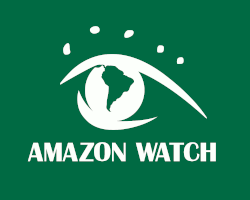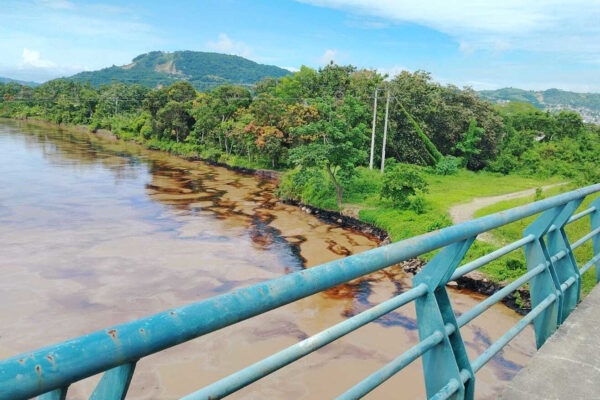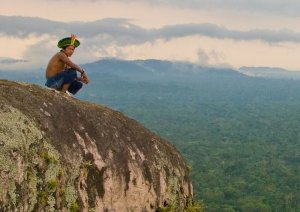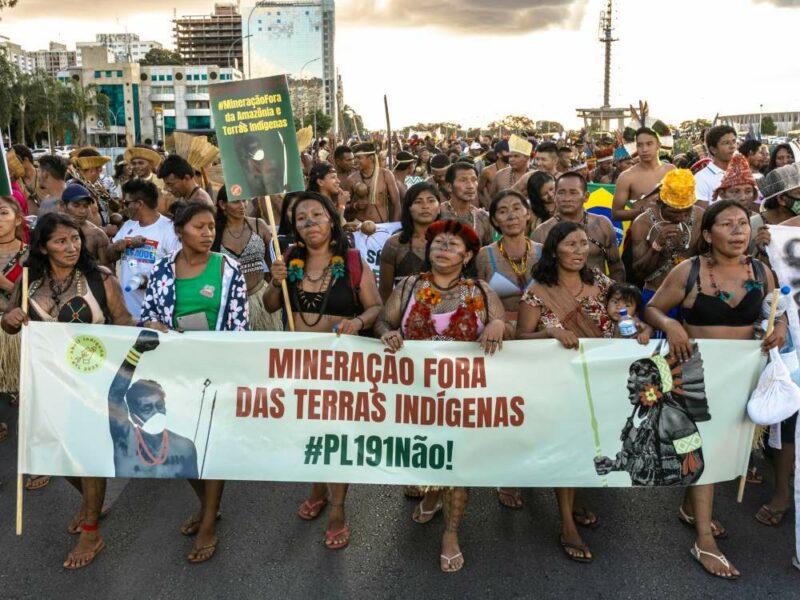Children’s voices in defense of water and life
From September 19–21, the city of Mocoa, Putumayo, in southern Colombia, became the beating heart of socio-environmental resistance. There, among the mountains and rivers, the Fourth Festival for Water, the Mountain, and Life was held, organized by the collective Guardians of the Andean Amazonia. The festival came at a crucial time for the resistance against mining in the region.
The protagonists were the region’s children, who raised their voices to defend ecosystems, biodiversity, and life itself – now threatened by the mining ambitions of Canadian multinational Giant Copper, formerly known as Libero Copper. With letters addressed to President Gustavo Petro, they narrated the beauty of their territory and collectively demanded respect for their communities and the right to live in environments free from destructive mining.
Art became the language of resistance. Through theater plays, photo exhibitions, and creative performances, children expressed both the joy of living in a healthy territory and the suffering of animals and communities when vital spaces are destroyed. These tender yet powerful expressions not only moved those present but also sent a clear message: the children of Mocoa say yes to life and no to mining.
The strategic value of Mocoa
Mocoa is a unique territory. Located at the confluence of the Andes and the Amazon, it hosts the Colombian Massif, known as the country’s “fluvial star.” From this source springs four of Colombia’s most important rivers: the Cauca, Magdalena, Caquetá, and Patía. It is also one of the few biological corridors connecting the Andes with the Amazon basin, enabling the transit of species and the convergence of cultures, knowledge, and ancestral memories.
As one young woman leader expressed during the festival: “Mocoa is the most conserved territory, where the mountains hold the winds of the ancestors, which descend to embrace the Amazon.”
Yet today, this environmental, social, and cultural wealth is under threat. Giant Copper has acquired four mining titles covering nearly 8,000 hectares, just 10 km from Mocoa’s urban center. Hiding behind the discourse of “energy transition,” the company seeks to legitimize an extractive model that, in practice, means the destruction of strategic ecosystems and the tearing apart of community social fabric.
Resistance against extractivism
Mocoa’s story is also one of persistent resistance. Indigenous, campesino, environmentalist, women’s, and youth organizations have stood firm, even in the face of corporate attempts to co-opt communities through financial incentives. Initiatives like the Resistance Tent in Pueblo Viejo created spaces for reflection and education to counter the company’s strategies and strengthen community unity.
This organizing bore fruit in June 2025, when the environmental authority Corpoamazonia adopted Resolution DG No. 0631, declaring an area of environmental interest in Mocoa and prohibiting all mining activity within its boundaries. However, Indigenous communities filed a legal injunction that overturned the resolution, arguing gaps in the prior consultation process. The case now awaits a second-instance ruling and clarification from the Ministry of the Interior and the National Authority for Prior Consultation.
Beyond legal technicalities, the resolution represented a vital step toward protecting Mocoa’s territory and environment. Annulment of the resolution puts the future of one of Colombia’s most strategic ecosystems at risk.
What’s at stake
The festival closed symbolically in the river, where participants shared stories and memories in a collective act of love for water. It served as a powerful reminder: water and life are sacred and cannot be sacrificed in the name of extractive interests disguised as sustainability.
Mocoa’s struggle is not isolated. It reflects a global conflict between life and mining greed, between environmental justice and false solutions to the climate crisis. As the children of Putumayo have shown, defending territory is also about defending the future, hope, and dignity.
What comes next
The Mocoa case requires constant vigilance and solidarity at both national and international levels. The Colombian government must guarantee protection for this Andean-Amazonian ecosystem and listen to the voices of those defending their territory through art, culture, and grassroots organizing.In Mocoa, children have already spoken: yes to life, no to mining. Now the challenge is to ensure their voices echo beyond the mountains and reach every corner where the planet’s fate is decided.













